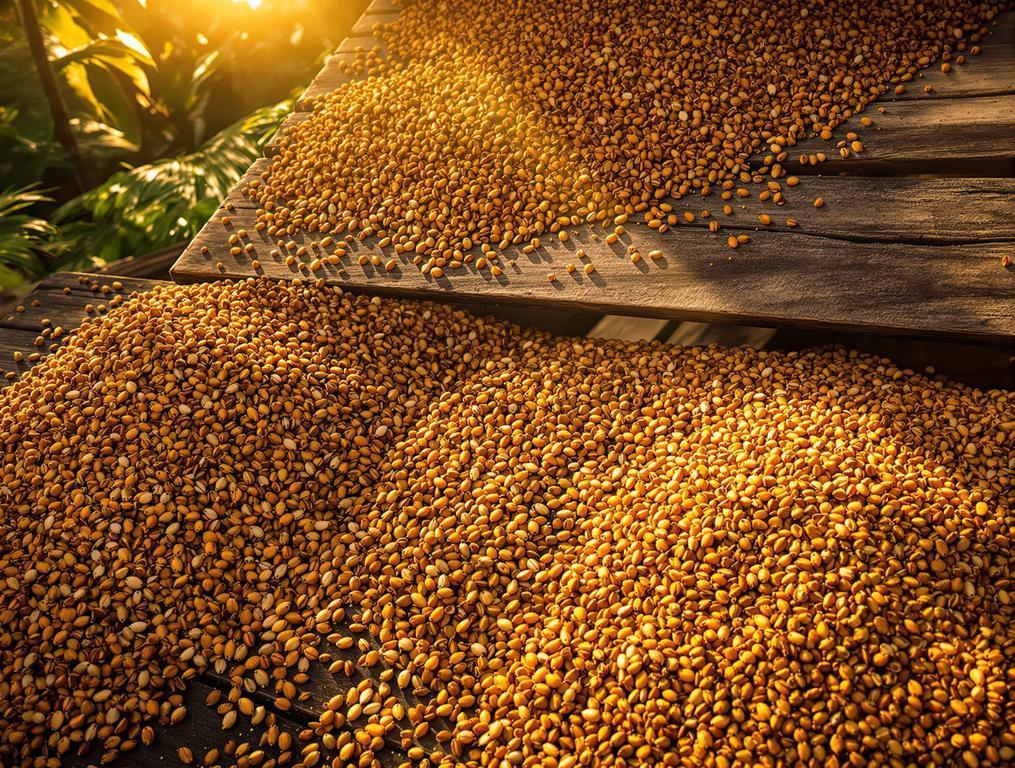I’m standing at the heart of a bustling spice market in St. George’s, Grenada, where the scent of nutmeg hangs in the humid Caribbean air. This tiny island nation of just 117,300 residents might seem insignificant on a world map, but I’ve just uncovered something remarkable. Despite its modest size, Grenada produces an astonishing 40% of the world’s nutmeg supply, dominating the global spice trade from its mere 340 square kilometers of tropical terrain.
The vendor smiles knowingly as I examine a perfectly formed nutmeg. “That one came from my family’s trees,” she says, her hands stained from years of harvesting. “Four generations of nutmeg farmers in my blood.” I’m witnessing an economic miracle hiding in plain sight – a David versus Goliath story of agricultural dominance.
The Spice Island’s Staggering 40% Share of Global Nutmeg
Grenada’s nickname – “Isle of Spice” – vastly understates its global importance. While most Caribbean islands leverage tourism as their primary economic driver, Grenada maintains a dual economic identity through its spice production legacy.
Walking through the spice processing facilities 20 minutes inland from the capital, I’m struck by the simple yet effective methods used for generations. Workers carefully separate the outer crimson webbing (mace) from the inner seed (nutmeg) before drying them on massive wooden platforms under the Caribbean sun.
What makes this tiny island’s dominance so remarkable is the competition. Indonesia, 800 times larger than Grenada, produces a similar volume of nutmeg despite its vastly greater landmass. The secret lies in Grenada’s volcanic soil, perfect climate, and centuries of specialized agricultural knowledge.
“People visit thinking we’re just another beach destination. Then they discover our spice heritage and realize they’ve found something authentic that the big islands lost long ago to mass tourism.”
How 117,300 Residents Outproduce Nations 800 Times Larger
This morning, I toured a family-owned nutmeg cooperative where three generations work side-by-side. Unlike many Caribbean islands where tourism has replaced traditional industries, Grenada has maintained its agricultural soul while developing sustainable tourism.
The contrast with neighboring islands is striking. While Barbados and Jamaica focus primarily on all-inclusive resorts, Grenada offers visitors a chance to experience authentic island culture similar to Cape Verde’s Santo Antão – minus the overwhelming crowds.
Climbing to Mount Saint Catherine’s 840-meter peak yesterday, I passed nutmeg trees growing alongside cocoa and banana plants. The fertile slopes of this dormant volcano help explain why Grenada’s spice yield per acre exceeds global averages by nearly 30%.
The island’s approach to balancing tourism growth with cultural preservation mirrors successful models seen in Thailand’s Koh Yao Yai, where visitor numbers don’t overwhelm local identity.
The Underwater Sculpture Park: Conservation Meets Art
Beyond its spice economy, Grenada pioneers marine conservation through its famed Underwater Sculpture Park in Molinère Bay. Just 15 minutes by boat from St. George’s harbor, this submerged gallery serves as an artificial reef, drawing divers and promoting coral growth.
Grenada’s volcanic origins shaped its fertile soil, similar to how Tenerife’s volcanic landscape created Europe’s version of Hawaii. But here, that volcanic foundation extends underwater, creating dramatic marine landscapes.
Visit during early morning (before 9am) when cruise ship passengers haven’t yet arrived. Local operators charge $40-60 for guided snorkeling tours, though independent travelers can access the park for just $12 via water taxi from Grand Anse Beach.
Summer 2025: Why the “Wet Season” Offers the Most Authentic Experience
While most tourists visit during the dry season (January-May), arriving now in June 2025 means experiencing Grenada at its most authentic. The early wet season brings brief afternoon showers that leave the spice plantations lush and fragrant.
Travelers seeking uncrowded beach alternatives might compare Grenada’s pristine shores to Ishigaki’s Hawaiian-rivaling beaches – both offering spectacular sands without the masses.
My wife Sarah photographed Grand Anse Beach yesterday at 5pm when golden hour illuminated the 3-kilometer stretch of white sand. We counted just 26 people spread across its entirety. In Caribbean terms, that’s practically private.
Standing in this market, watching families trade spices as they have for centuries, I realize Grenada offers something increasingly rare – a place where global significance doesn’t equate to overwhelming tourism. The island reminds me of a perfectly balanced nutmeg seed: small, potent, and capable of flavoring something much larger than itself.
